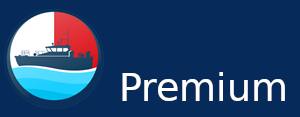Article GPS (Part 1) - Structure, mode of operation, technical and physical fundamentals of GPS
by Capt. Gunter Schütze, Thailand/Germany - published on 30 January 2020
Article GPS (Part 2), physical and technical errors of GNSS - an error analysis
by Capt. Gunter Schütze, Thailand/Germany - published on 26 February 2020
In my announced sequel, the second part of GPS, it is primarily about the technical and physical operational and functional limitations to which GPS is subject. These limitations, in part, have serious implications for the accuracy of GPS, and even go as far as limiting the functionality of GPS in its functions or even making it impossible. In doing so,
Article GPS (Part 3) - Accidental interferences and intended Interferences by extern technical sytems
by Capt. Gunter Schütze, Thailand/Germany - published on 6 May 2020
Video How Stabilisers Reduce A Ship's Roll
published on 4 July 2019
Article How many Navy vessels are compliant to SOLAS ch.V reg23?
by Arie Palmers - published on 25 April 2022
Video Safety of Navigation vs. Commercial Pressure
published on 18 January 2021
Safety of Navigation vs. Commercial Pressure / ROMEILs Tv Commercial Pressures impacts the safety of the vessel, study says Seafarers are pressured to keep quiet and keep the ship moving by ship operators, who dont want to lose inccome. Ship's officers who bring safety issues to the attention of management are exposed to the risk of retaliation. As whistle-blowers they may face punishment, demotion or even termination. International Organization of Masters, Mates & Pilots (MM&P) has...
Video Maritime Pilot Training I - Man overboard manoeuvre
by Loodswezen Amsterdam-Ijmond - published on 12 May 2021
Article Human Error in Pilotage Operations
published on 3 December 2024
Video Virtual Reality Marine Pilot Transfer Training Demo
published on 4 July 2020
Short demonstration highlighting key features of the VR Marine Pilot training simulation LWA Solutions have delivered for the Ports of Auckland.
Editors Note (4th July 2020):
This video shows the fantastic possibilities of virtual reality technology. Wonderful demo by Ports of Auckland. In respect for doing this amazing experiment. If somebody knows more about this or other interesting similar projects please leave a comment below and help us to complete information about virtual reality...


